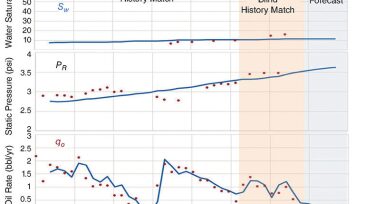data mining
-
SponsoredAre you ready? Data is an enterprise asset, underlying your ability to deliver on your commitments. But are you deploying it in ways that serve your strategic goals? Datagration makes the case for changing how you think about data management.
-
The value of hidden-danger data stored in text can be revealed through an approach that can help sort and interpret information in an ordered way not used previously in safety management.
-
Data-driven methods offer significant advantages in the industry, under certain conditions, over conventional methods. But reservations still exist about their use. The paper serves to bridge the gap between unclear understanding of these methods and their successful acceptance and implementation.
-
A recently launched joint industry project (JIP) is working to improve petrophysical analysis methods to reduce the time and expense of characterizing tight sandstone gas reservoirs for exploration, appraisal, and production.
-
Young Technology Showcase—Top-Down Modeling: A Shift in Building Full-Field Models for Mature FieldsData-driven, or top-down, modeling uses machine learning and data mining to develop reservoir models based on measurements, rather than solutions of governing equations.
-
A data-driven approach to successfully analyze and evaluate production-fluid impact during facility system divert events is presented. The work flow effectively identifies opportunities for prompt event mitigation and system optimization.
-
Failure to prioritize objectives and improper selection of candidate wells can have significant implications for both derived value and potential risk.
-
Data mining for production optimization in unconventional reservoirs brings together data from multiple sources with varying levels of aggregation, detail, and quality.
-
The challenges facing the oil and gas industry require crossover technologies from other industries such as aerospace, automotive, and medicine to help drive efficiency, boost productivity, and optimize performance.
Page 2 of 2









